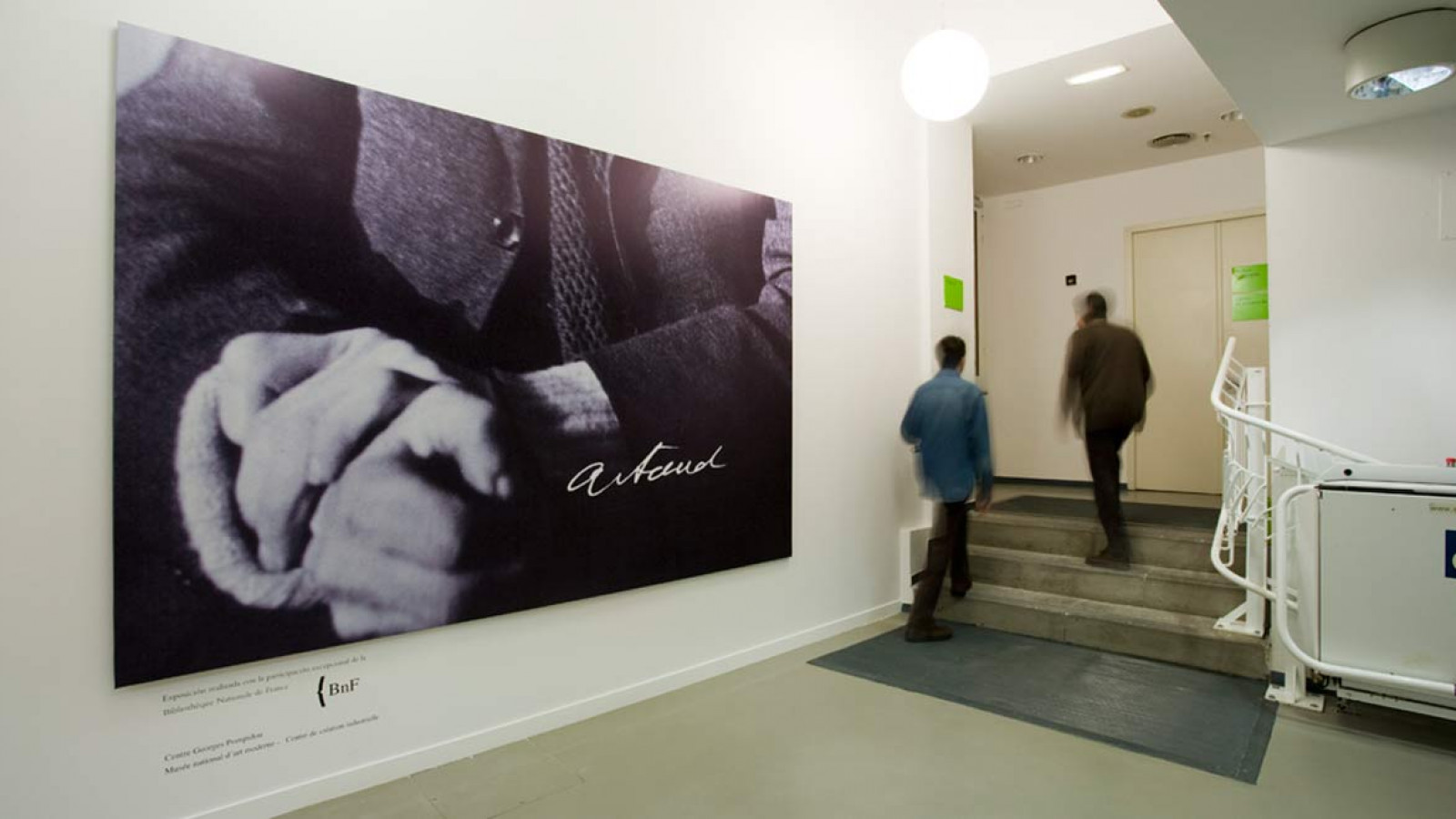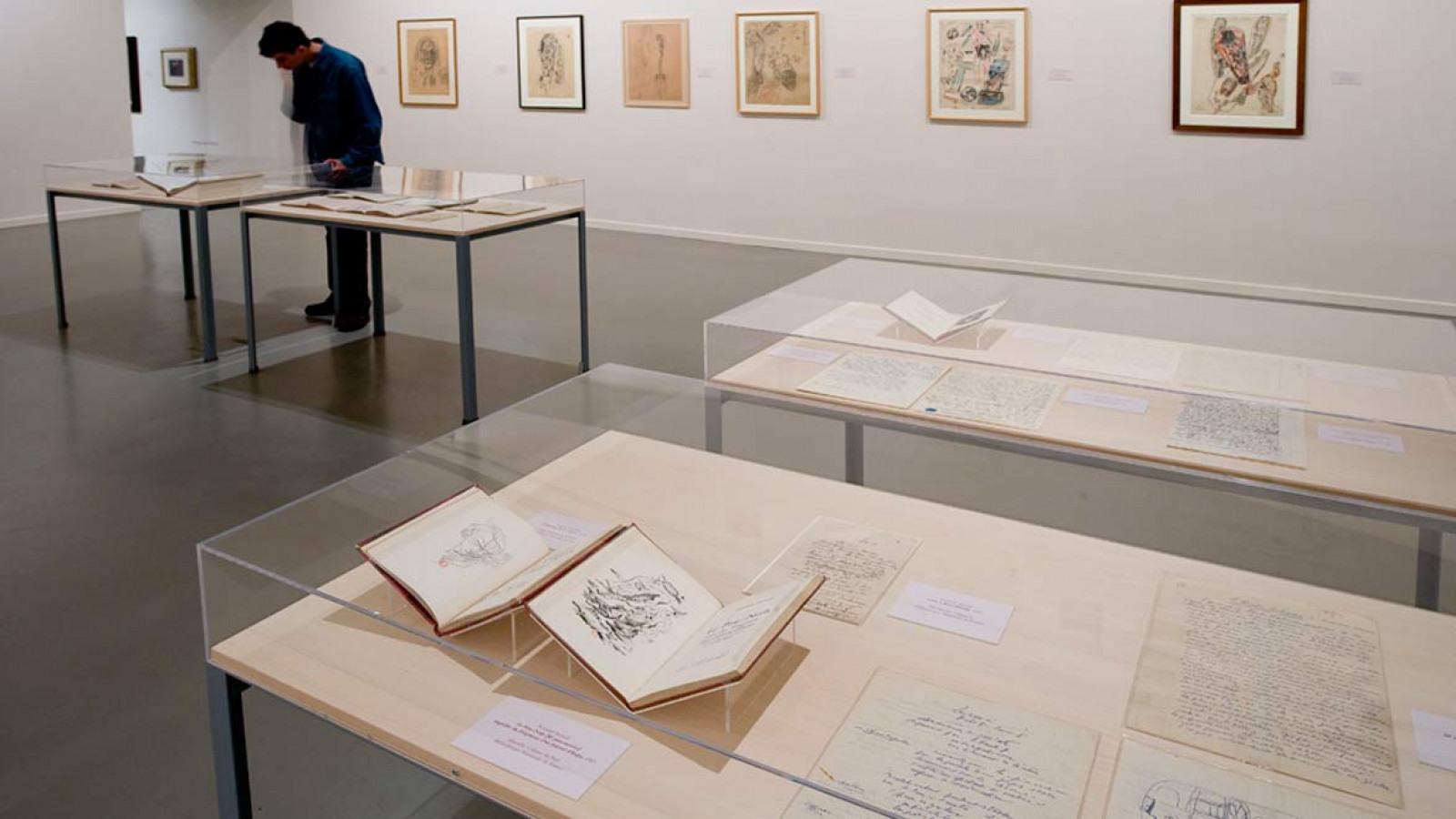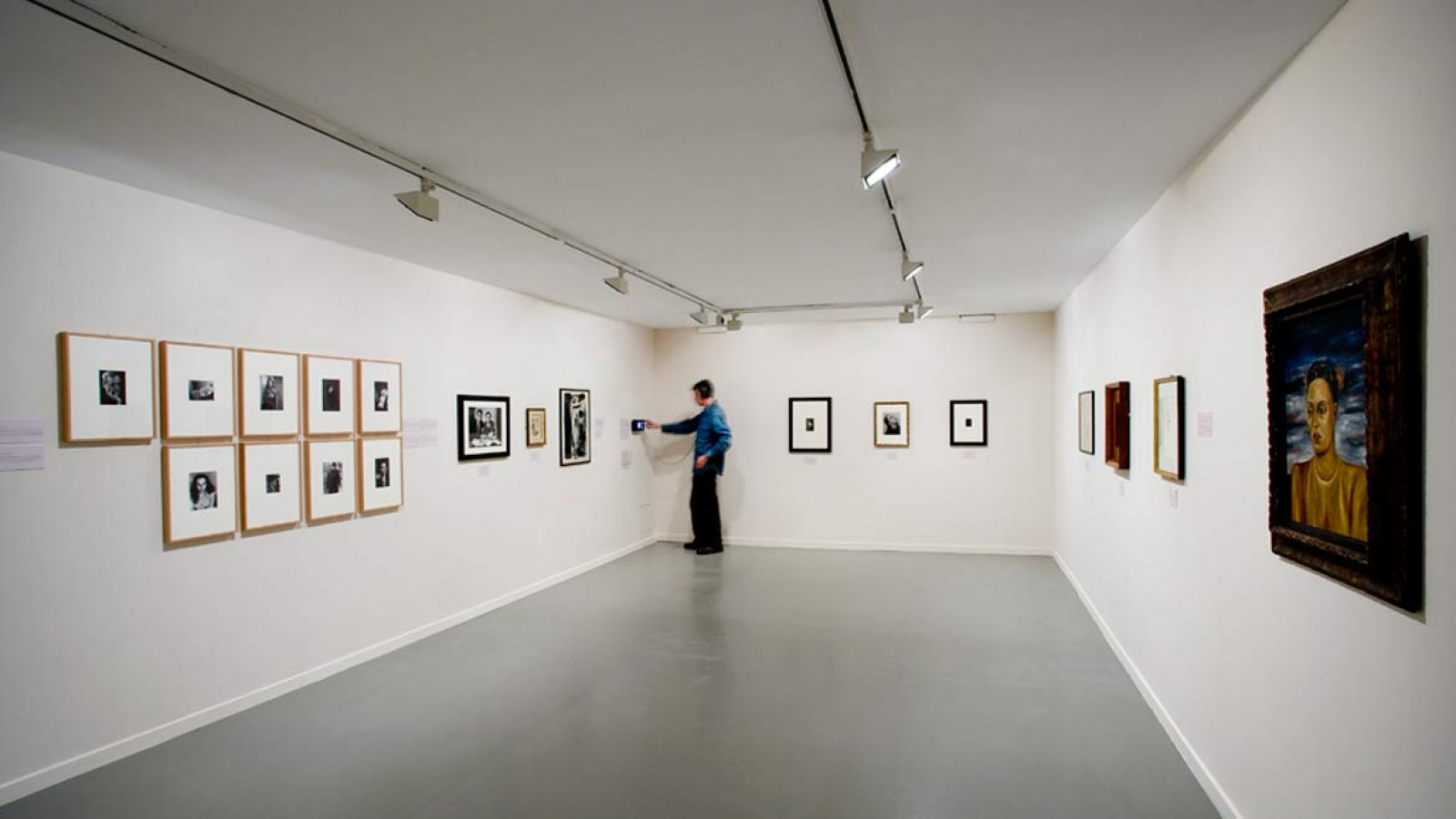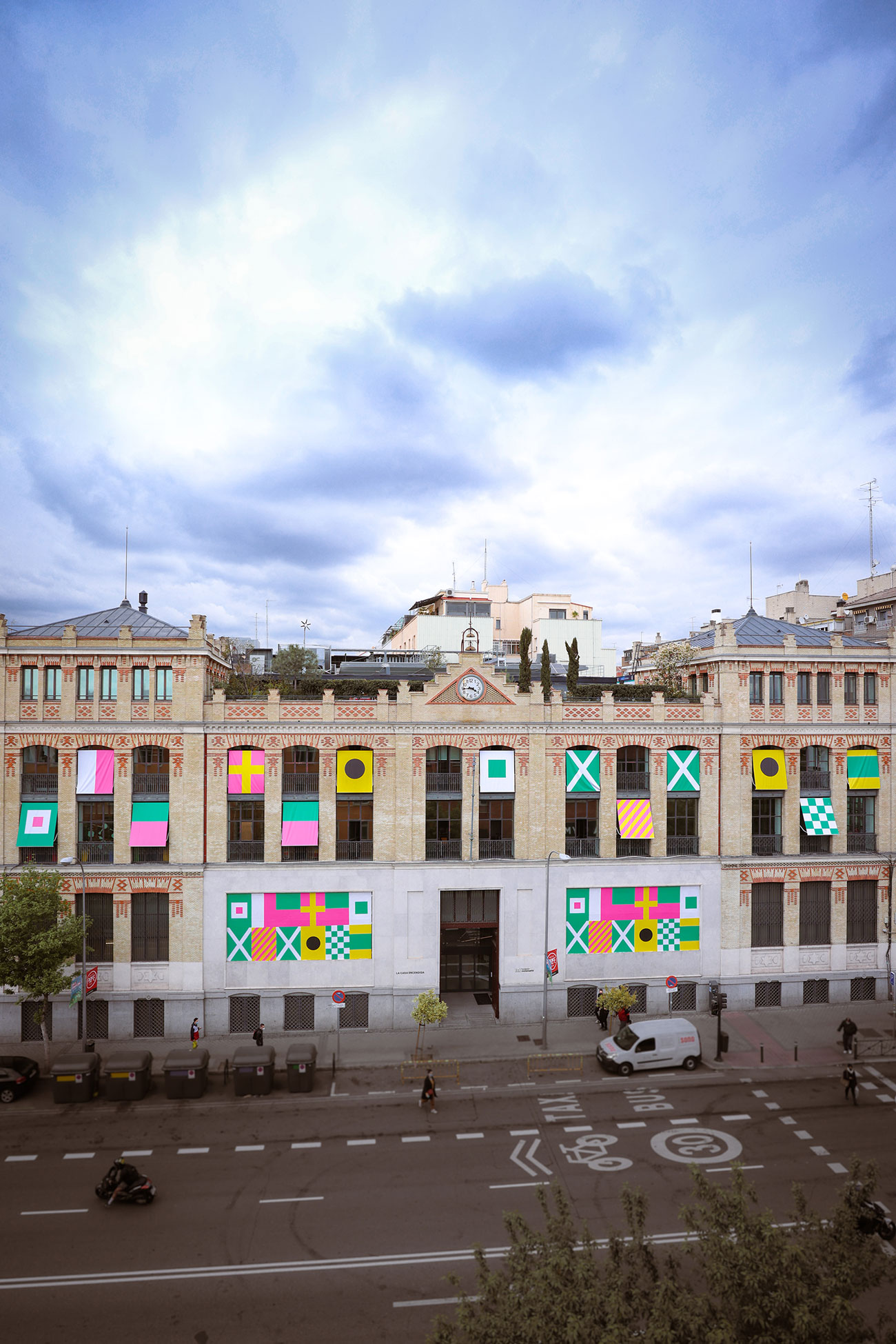Artaud
This exhibition presents the drawings and cahiers of Antonin Artaud (Marseille, 1896–Paris, 1948), the first of its kind ever devoted to this artist in Spain. His singular, free-spirited graphic work is just one fascinating example of the multifaceted creative energy that fuelled his life and art.
Artaud began writing notebooks in February 1945, when he had already been a patient at the Rodez mental asylum for two years. The first thought that comes to mind, upon viewing the first complete set, is that the cahiers "dictate their own tone and tempo". The richness of this material defies classification: they are not literary texts and cannot be analysed as such, but neither are they sketches or drafts to be fleshed out at a later time. The cahiers are a working quarry, a mine where the author digs with a versatile yet massive, unsophisticated tool. When Artaud's 406 cahiers are viewed sequentially, significant variations in handwriting, marks and signs leap to the eye. Together they form a map, a firmament that reflects the author's emotional state.
Artaud's early works (his drawings) reveal his interest in contemporaries like Munch, Bonnard and Hodler. He also knew Yvonne Gilles, who encouraged him to take up painting. Using the most fundamental and basic elements, Artaud's drawing established new connections, resonances, evocations and gaps capable of generating new meaning; his graphic work stems from poetic thought.



